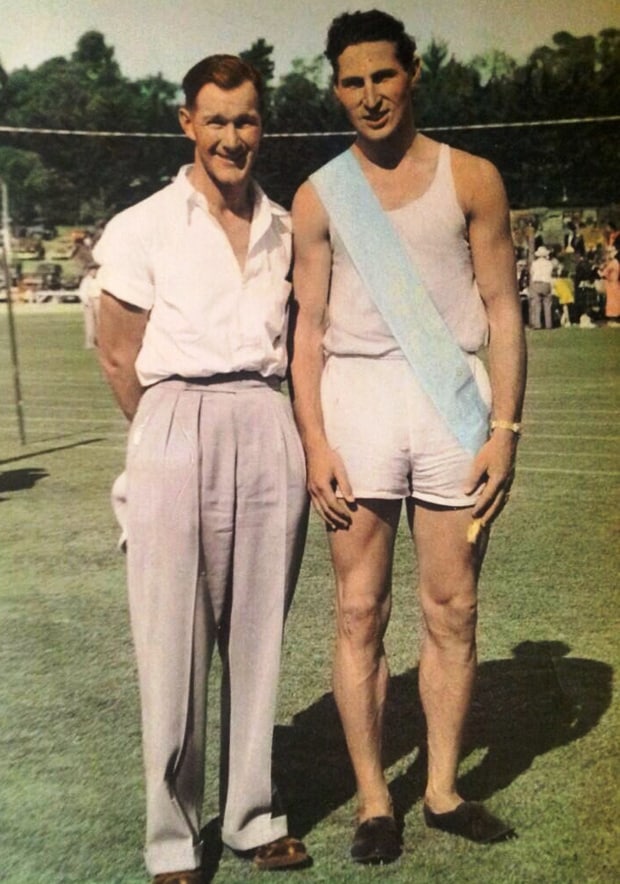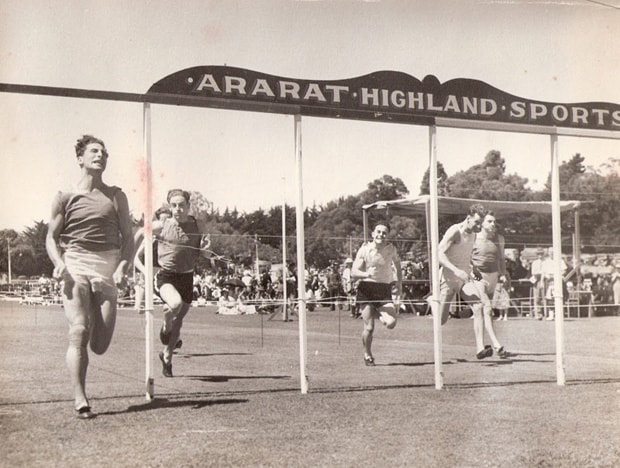At Carlton, Tom Simmons would later combine football with cricket commitments, as would “Mick” Price and Jim Baird his club contemporaries.
Simmons earned Carlton’s Best First-Year Player award in 1948 – the first of just two seasons at senior League level - during which time he alternated between half-back and half-forward.
Wearing the famous No.2 of John Nicholls, Greg Williams and (now) Troy Menzel, Simmons completed his senior debut barely a month after his 19th birthday. He would string together 27 senior appearances for the Blues through 1948 and ’49, having been adjudged their best first-year player.
Simmons’ rare litheness was on show in an all-too-brief League football foray. His impressive speed, long-kicking and high-marking, together with his insatiable appetite for the contest, made him a formidable foe. An old teammate, the late Laurie Kerr, said of Simmons: “He looked and performed like Mighty Mouse on the field”, and the noted field umpire Harry Beitzel rated the player a champion in the making.
Tragically, Simmons’ football career ended before it had effectively begun. In a pre-season practice match in 1950, he buckled with a serious knee injury which later warranted two separate surgical procedures.
Simmons took on professional foot running as he completed a remarkable recovery, taking out the Terang, Ararat, Maryborough and Port Fairy Gifts as backmarker through the summers of 1950 and ’51. Clearly he could still run the straight lines.

But while he again committed to Carlton to help fill the void left by the recently-retired full-forward Ken Baxter, he was never able to emulate his footballing feats, although he did follow up as a field umpire in the sticks.
Simmons married his sweetheart Lorraine the following year, and later forged a successful career as an industrial chemist for companies such as Revlon and Estee Lauder. He and his wife raised a family of seven children, and he was a regular at Carlton games for many years long after his on-field career had ended.
With the permission of son Tony, Part 2 of Tom’s personal memoirs of another time at Carlton follows.
Part 2 - My football career
I was not involved in competitive football until the age of 18 when I joined Northcote Juniors Football Club.
In the VFL in those days, clubs were allocated zones. If you lived in a certain zone you could not join a football club in another zone. I lived in East Brunswick, which was a Carlton zone. That restrictive system was abandoned in 1960.
During my first and only season with Northcote Juniors, a Carlton scout Jim Francis attended one or two matches looking for potential Carlton recruits. The next year I couldn’t believe I was invited to attend training at Carlton and was given the opportunity to become a member of the senior list of players. In those days each VFL club had a team playing in each of the three grades – the Thirds for kids from 14 to 18 years, the Seconds for players aged 16 to 30 and the Firsts where the players ranged from 18 to 33. In my case I was asked to train with the senior team in mid-1949 and went straight into the Firsts team without playing any matches in the Seconds or Thirds competition.
Carlton was a famous football club and I was greatly honoured and found that when I first ran out onto Princes Park with my teammates most of them were seasoned stars.

I enjoyed the training sessions each Tuesday and Thursday from 4.30pm to 6.30pm. as the youngest member of the team I was determined to improve my skills and earn the respect of my teammates. Fortunately I had a high level of physical fitness and in fact I was the fastest player in the team. My friends thought I had an obsession with fitness. They were probably right! In 1949 very few of the team possessed a car. In the streets I would be doing running and I enjoyed doing broad jumps over driveways on the footpaths.
The football season comprised 20 home and away games. I was fortunate to play 17 games in my first season and was awarded the best first year player.
In my second season I was seriously injured in a match against Collingwood during the 11th game. My right knee was badly damaged in a collision with an opposing player. I had two torn cartilages. Surgery was performed by a top orthopaedic surgeon to remove the cartilage, but I missed the remainder of the season.
During the summer months I regained my physical fitness but my knee did not regain its strength. I was not confident that my knee would allow me to play out a match with my former vigour and strength so reluctantly I retired from football.
I was devastated.
My short career of 28 games ended abruptly during that match against Collingwood. In those days playing for a VFL club was all about loyalty and team spirit. The only financial reward was a payment of £4 [about $8] per game.


